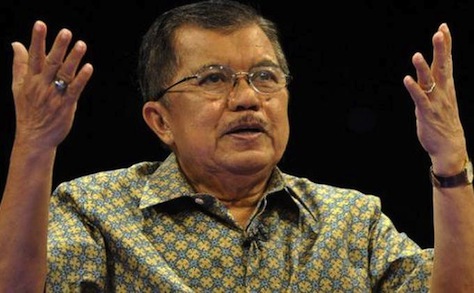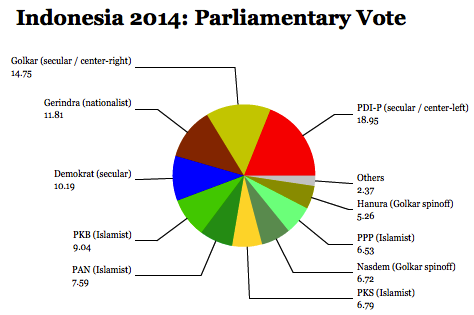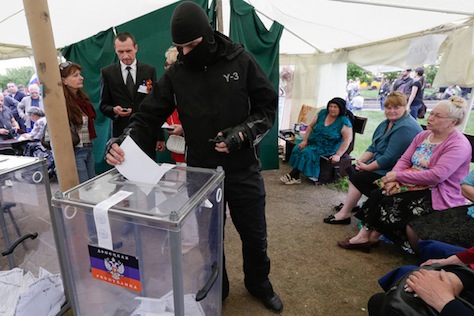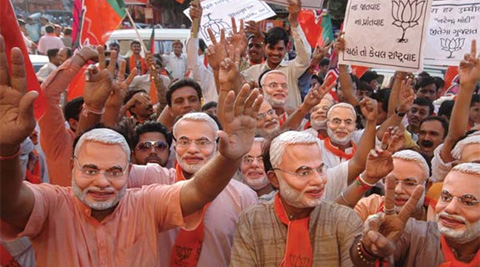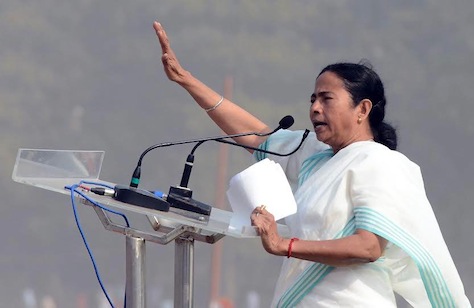
In today’s final phase of India’s six-week national elections, attention has increasingly shifted to West Bengal, which will elect the final 17 of its 42 seats in the lower house of the Indian parliament, the Lok Sabha (लोक सभा).
But even as he tries to sweep the rest of the country, Gujarat chief minister Narendra Modi, the leader of the conservative, Hindu nationalist Bharatiya Janata Party (the BJP, भारतीय जनता पार्टी) will find precious few votes in West Bengal.
As far as that goes, neither will his national rival, the secular Indian National Congress (Congress, भारतीय राष्ट्रीय कांग्रेस), which has governed India for the past decade under the leadership of party president Sonia Gandhi and prime minister Manmohan Singh.
That’s because, like so many of India’s states these days, West Bengalese politics is dominated by entirely regional forces.
Between 1977 and 2011, West Bengal featured the longest consecutive communist government in elective history — under the long-serving chief minister Joyti Basu, from 1977 to 2000, and his successor Buddhadeb Bhattacharya, from 2000 to 2011. For 34 years, the Communist Party of India (Marxist) (CPI(M) ruled West Bengal as the largest party of the Left Front (বাম ফ্রন্ট) coalition.
That all changed with the 2011 state assembly elections, when Mamata Banerjee (pictured above), known simply as ‘didi‘ (‘sister’ in Bengali), swept to power in a lopsided victory. She and her allies now control 227 of the 294 sets in the legislative assembly. Banerjee, who began her career in the Congress Party, formed the All India Trinamool Congess (TMC, সর্বভারতীয় তৃণমূল কংগ্রেস) in 1997.
Banerjee quickly joined the National Democratic Alliance (NDA) and became railways minister in the BJP-led government of Atal Bihari Vajpayee. She re-aligned herself with the Congress Party in 2009 as part of the United Progressive Alliance (UPA), and once again served as railways minister, this time under Singh.
She returned to West Bengal for the 2011 state campaign, leading the TMC to its overwhelming victory. As chief minister, Banerjee has emerged as one of the most powerful players in Indian politics, and while she may not have lived up to high expectations that followed her victory three years ago, she’s generally seen as a relatively honest public servant and she’s worked to improve health and education programs throughout West Bengal, traditionally one of India’s poorer states on a per-capita basis.
It’s difficult to place Banerjee politically. At the state political level, she and the TMC are ideologically to the right of the Left Front, naturally, and at the national level, Banerjee has allied with both the major parties. It’s perhaps most correct to say that Banerjee is a populist, veering left or right as convenient for her political future or for West Bengal’s relationship vis-à-vis the central government.
But an alliance with the BJP seems unlikely as Modi and Banerjee has increasingly traded harsh barbs on the campaign trail.
Much of the explanation lies at the intersection of religion and politics. Modi is trying to maximize Hindu support in West Bengal, but also in the voter-rich states of Uttar Pradesh, Bihar and elsewhere in the ‘Hindi belt.’ Banerjee, for her part, is increasingly trying to unite Muslim voters in West Bengal, which comprise over one-quarter of West Bengal’s 91 million residents.
Modi has attacked the West Bengal state government for its handling of the Saradha Group financial scam that defrauded 1.7 million Indians, mostly in West Bengal, of up to $6 billion. Earlier this month, India’s supreme court referred the current investigations to India’s Central Bureau of Investigation amid signs of political interference. Modi has also taken a hard stand against Bangladeshi illegal immigrants. Last week, Banerjee pushed back, calling Modi a ‘donkey,’ and chastising him as the ‘butcher of Gujarat’ for his alleged role in deadly riots there in 2002.
Why is this all so important? Continue reading Mamata-Modi spat takes center stage in West Bengal →
![]()
